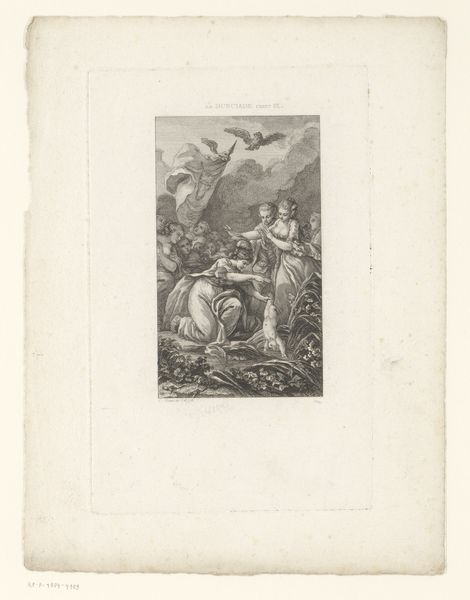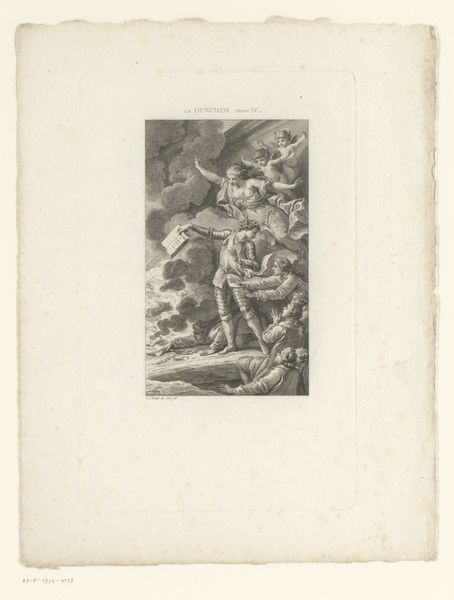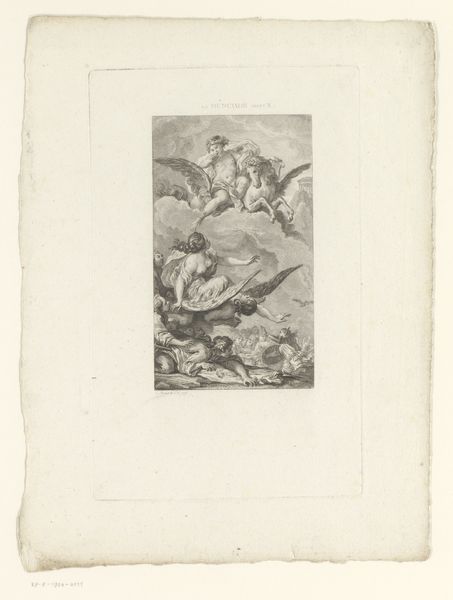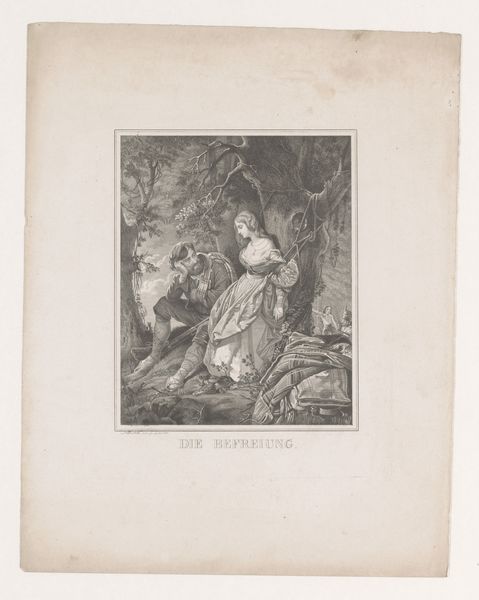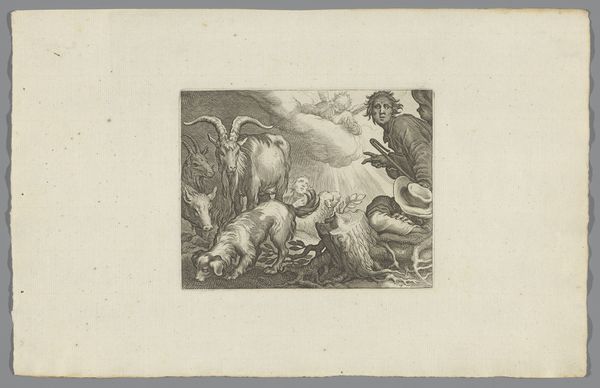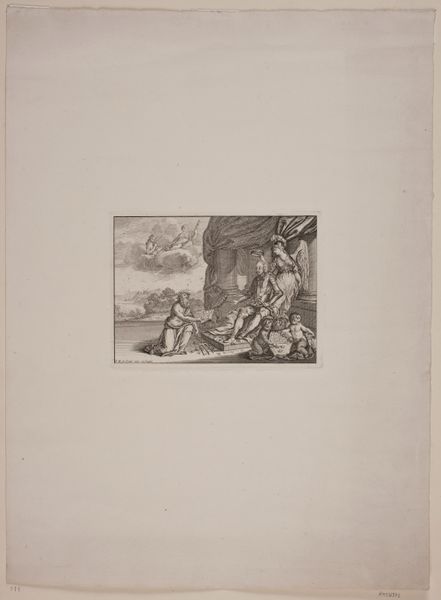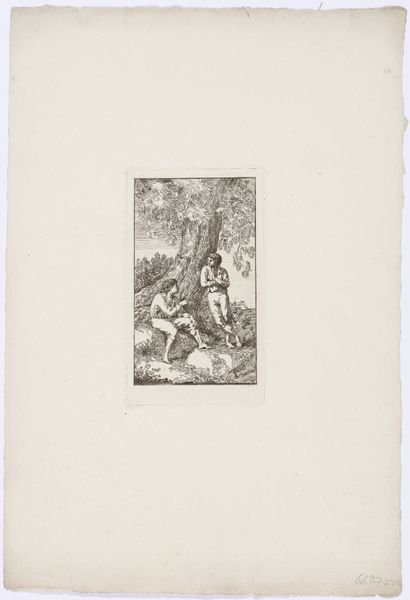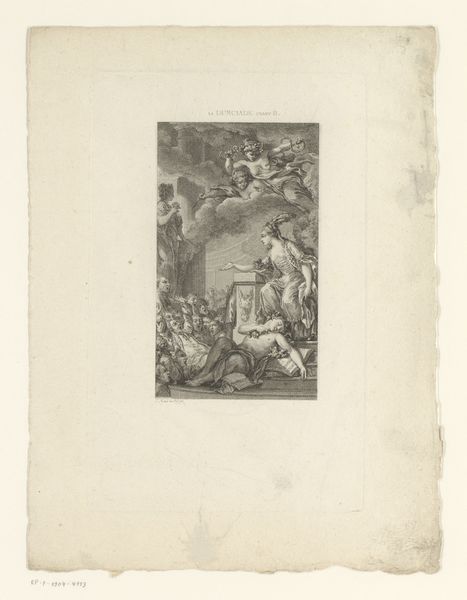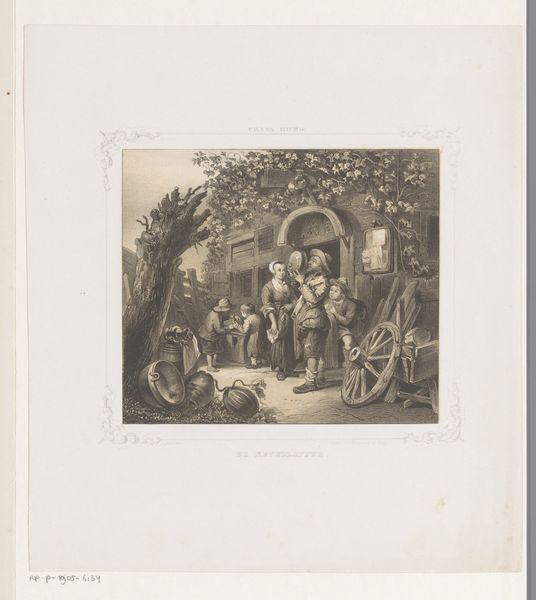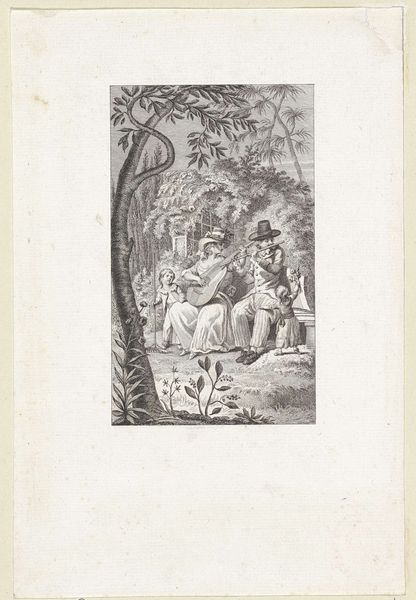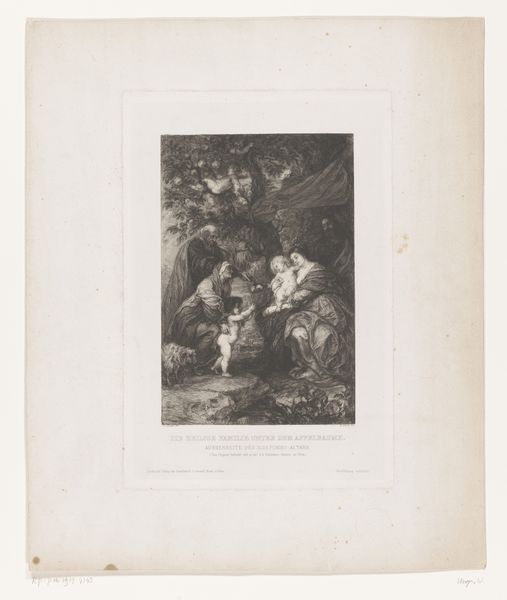
Dimensions: height 189 mm, width 143 mm
Copyright: Rijks Museum: Open Domain
Robert Delaunay's "Germanicus tijdens een storm op de Noordzee, 16," captures the Roman general amidst a tempest, a scene fraught with symbolic weight. The tumultuous sea, the lightning-streaked sky, and the fragile vessel carrying Germanicus are potent symbols of the precariousness of human existence against the forces of nature. The image evokes the ancient motif of the "sea storm," a theme that recurs across cultures and epochs. Think of the Deluge in ancient Mesopotamian art or even the trials of Odysseus as depicted on Greek amphorae. The raised arm of Germanicus—a gesture of command and defiance—echoes the iconography of emperors and gods across centuries. We see it again and again, in the statue of Augustus of Prima Porta and even later, in Napoleon’s portraits. This gesture is laden with a deep, often subconscious, longing for control over chaos. Yet, the storm reminds us of the limits of human power. The cyclical nature of such symbols underscores humanity’s enduring struggle with mortality, forever resurfacing in our collective memory.
Comments
No comments
Be the first to comment and join the conversation on the ultimate creative platform.
